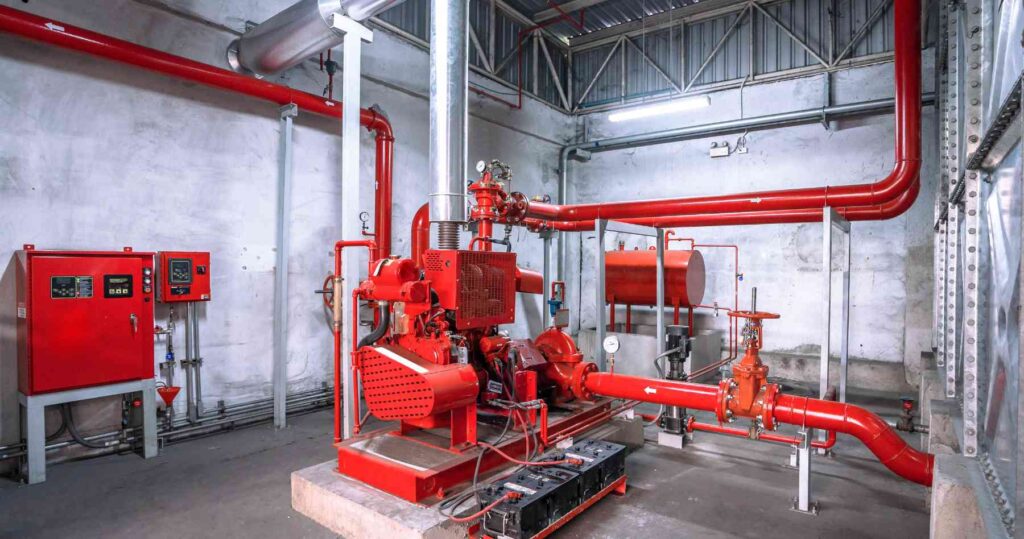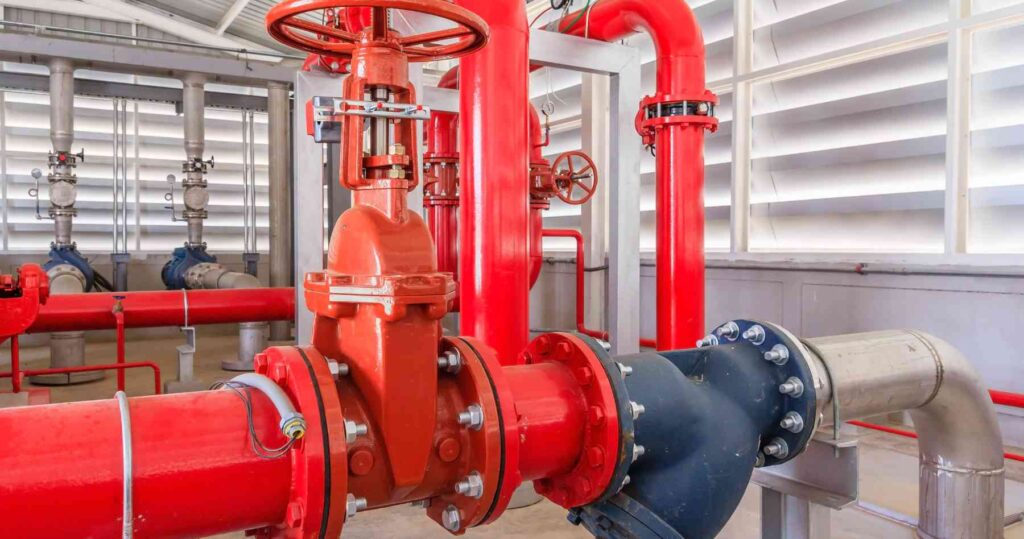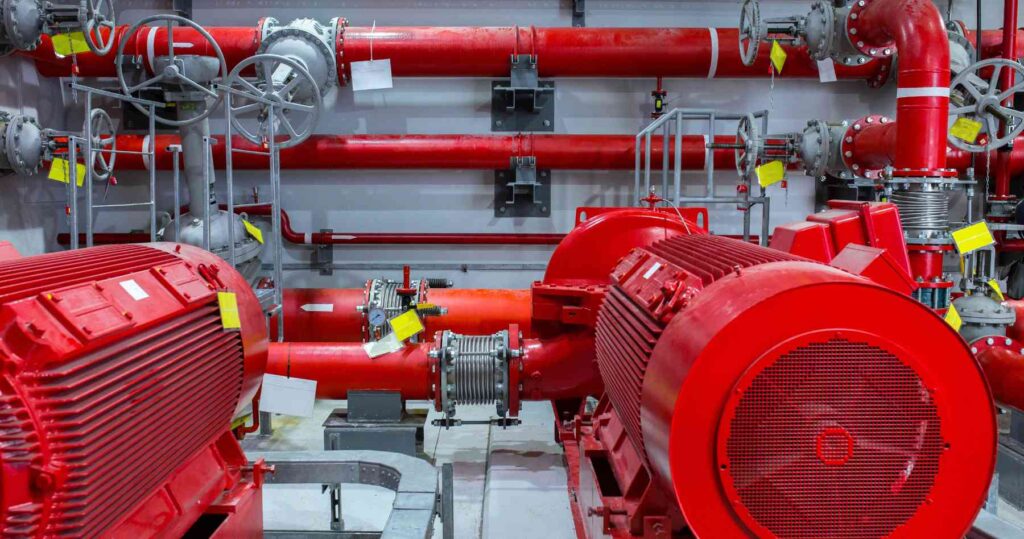Fire Pump System Installations: Everything You Need to Know for Enhanced Fire Safety
Fire safety is a critical aspect of building infrastructure, and fire pump systems play a vital role in ensuring the safety of occupants. In this article, we will delve into the key aspects of fire pump system installations, discussing their importance, components, installation process, maintenance requirements, and more. Whether you are a building owner, architect, or fire safety professional, understanding the essentials of fire pump systems is crucial to protect lives and property in the event of a fire emergency.

Understanding Fire Pump Systems
Fire pump systems are crucial elements of fire protection systems in buildings. They are designed to provide adequate water flow and pressure to firefighting sprinkler systems, hydrants, and other firefighting equipment during an emergency. By maintaining a reliable water supply, fire pump systems ensure the efficient operation of fire suppression systems, aiding in the containment and extinguishing of fires.
Importance of Fire Pump Systems
Fire pump systems are essential in situations where the available water supply is insufficient to control a fire effectively. They ensure that an adequate amount of water is delivered to the fire, enabling firefighters to combat the flames efficiently. Fire pump systems also help compensate for water pressure loss in high-rise buildings, ensuring that water reaches upper floors with sufficient force.
Components of a Fire Pump System
A typical fire pump system consists of various components, each playing a crucial role in its overall functionality. These components include:
Fire Pump: The heart of the system, responsible for drawing water from an external source and providing adequate pressure to the fire suppression system.
Water Supply: A reliable water source, such as a dedicated water tank or a public water main, which provides water to the fire pump.
Piping Network: A network of pipes that distribute water from the fire pump to the fire sprinkler system, hydrants, standpipes, and other firefighting equipment.
Controllers and Sensors: Devices that monitor water pressure, flow rates, and activate the fire pump when necessary.
Valves and Gauges: Essential for regulating water flow, pressure, and isolating specific sections of the system for maintenance or repairs.
Auxiliary Power Supply: Backup power sources, such as generators or batteries, that ensure the fire pump system operates even during a power outage.
Types of Fire Pump Systems
There are two primary types of fire pump systems commonly used:
Electric Motor-Driven Fire Pumps: These pumps are powered by electricity and are suitable for buildings with a reliable electrical supply. They are efficient and provide consistent performance, requiring less maintenance.
Diesel Engine-Driven Fire Pumps: These pumps utilize diesel engines as their power source. They are often used in areas with unreliable or limited electrical supply. Diesel engine-driven pumps provide greater reliability and are capable of handling large water flow rates.
Enjoy The Peace Of Mind And Safety Of A MASTER Electrician...

Determining the Need for a Fire Pump System
The requirement for a fire pump system depends on various factors, including building size, occupancy type, local fire safety regulations, and the availability of water supply. Fire safety professionals and architects should conduct a thorough analysis to determine if a fire pump system is necessary for a particular building.
Planning and Designing Fire Pump System Installations
Effective planning and design are crucial for successful fire pump system installations. This stage involves assessing the building’s layout, water supply sources, determining the optimal location for the fire pump, sizing the piping network, and complying with relevant codes and standards.
Installation Process of Fire Pump Systems
The installation of a fire pump system involves several key steps, including:
Preparation: Gathering necessary permits, documentation, and approvals before commencing the installation.
Site Preparation: Ensuring the installation area is clear, accessible, and meets safety requirements.
Positioning and Mounting: Properly locating and securing the fire pump, ensuring it is easily accessible for maintenance and operations.
Piping Installation: Carefully installing the piping network, considering pressure loss, flow rates, and efficient water distribution.
Electrical Connections: Making electrical connections between the fire pump, controllers, and sensors, ensuring proper functionality.
System Integration: Coordinating with other fire safety systems, such as sprinklers, alarms, and emergency lighting, for seamless integration.
Testing and Commissioning: Conducting comprehensive tests to ensure all components function correctly and meet performance standards.
Electrical Considerations for Fire Pump Systems
Electrical aspects are critical for the proper operation of fire pump systems. The electrical design should account for power supply reliability, backup power sources, proper grounding, and adherence to electrical safety codes and regulations.
Testing and Commissioning
Once the installation is complete, thorough testing and commissioning are necessary to verify the proper functioning of the fire pump system. This involves conducting flow tests, pressure tests, alarm tests, and coordination with relevant authorities for final approvals.
Regular Maintenance and Inspections
To ensure the reliability and longevity of a fire pump system, regular maintenance and inspections are vital. Maintenance tasks include checking for leaks, verifying proper water flow, testing alarm systems, and exercising valves. Regular inspections help identify potential issues and allow for timely repairs or replacements.
Hear from our customers...
ExcellentBased on 7 reviews Trustindex verifies that the original source of the review is Google.
Trustindex verifies that the original source of the review is Google. Vanessa Johnson2021-05-27Great guys, always helpful and friendly. Have used their services for many years, always been satisfied with their service and pricing. Highly recommended!Trustindex verifies that the original source of the review is Google.
Vanessa Johnson2021-05-27Great guys, always helpful and friendly. Have used their services for many years, always been satisfied with their service and pricing. Highly recommended!Trustindex verifies that the original source of the review is Google. Melany Jane2021-04-28I'm really glad to have found Electrogem. Garth and Devin were professional, good-humoured, and worked neatly and hard - not even breaking for lunch. I really appreciated the jargon-free explanations of what was needed, and the great suggestions that I wouldn't have thought of (like replacing the old fluorescents in our stair lights with LEDs). They covered a large amount of work in a few hours and I found their pricing reasonable for the value.Trustindex verifies that the original source of the review is Google.
Melany Jane2021-04-28I'm really glad to have found Electrogem. Garth and Devin were professional, good-humoured, and worked neatly and hard - not even breaking for lunch. I really appreciated the jargon-free explanations of what was needed, and the great suggestions that I wouldn't have thought of (like replacing the old fluorescents in our stair lights with LEDs). They covered a large amount of work in a few hours and I found their pricing reasonable for the value.Trustindex verifies that the original source of the review is Google. Reggie Pfeiffer2020-07-20Great friendly professional service. Layne and Garth didn't think twice about going the extra mile and making sure my problems were attended to.Trustindex verifies that the original source of the review is Google.
Reggie Pfeiffer2020-07-20Great friendly professional service. Layne and Garth didn't think twice about going the extra mile and making sure my problems were attended to.Trustindex verifies that the original source of the review is Google. JOHN GAWLER2020-03-18I recently needed an Electrical Compliance Certificate for my property. A "highly recommended" company did an inspection and politely presented me with a "highly inflated" quote for remediation work. I was then referred to Electrogem. Layne Manly from Electrogem responded to my plea for help. Within a few days; Layne and his crew undertook a new inspection, completed the necessary remediation work and issued the necessary compliance certificate. The bill (including the new inspection fee) from Electrogem was substantially lower than the original quote. They are extremely professional, highly responsive and incredibly reliable. You will never go wrong by calling on Electrogem.Trustindex verifies that the original source of the review is Google.
JOHN GAWLER2020-03-18I recently needed an Electrical Compliance Certificate for my property. A "highly recommended" company did an inspection and politely presented me with a "highly inflated" quote for remediation work. I was then referred to Electrogem. Layne Manly from Electrogem responded to my plea for help. Within a few days; Layne and his crew undertook a new inspection, completed the necessary remediation work and issued the necessary compliance certificate. The bill (including the new inspection fee) from Electrogem was substantially lower than the original quote. They are extremely professional, highly responsive and incredibly reliable. You will never go wrong by calling on Electrogem.Trustindex verifies that the original source of the review is Google. Peter Holmes2019-05-23Electrogem have just installed a full solar PV system (panels, inverter, batteries) at my home. I found them to be very professional and the workmanship to be of the highest standard. Layne Manley is knowledgeable and approachable, and his staff (Garth and Michael) were meticulous in performing the installation. I can unreservedly recommend Electrogem .Trustindex verifies that the original source of the review is Google.
Peter Holmes2019-05-23Electrogem have just installed a full solar PV system (panels, inverter, batteries) at my home. I found them to be very professional and the workmanship to be of the highest standard. Layne Manley is knowledgeable and approachable, and his staff (Garth and Michael) were meticulous in performing the installation. I can unreservedly recommend Electrogem .Trustindex verifies that the original source of the review is Google. Sue Barnes2019-03-06When you have an electrical emergency it is great to know an electrician like Layne, as an estate agent it's important that we have a reliable support team, tx guysTrustindex verifies that the original source of the review is Google.
Sue Barnes2019-03-06When you have an electrical emergency it is great to know an electrician like Layne, as an estate agent it's important that we have a reliable support team, tx guysTrustindex verifies that the original source of the review is Google. Pieter Kotze2019-03-05Thank you Layne and team, great job, fast, clean and efficient. Highly recommended
Pieter Kotze2019-03-05Thank you Layne and team, great job, fast, clean and efficient. Highly recommended
Upgrading and Modernizing Fire Pump Systems
Over time, advancements in technology and changes in building requirements may necessitate upgrades or modernization of fire pump systems. Upgrading can involve replacing outdated components, improving efficiency, integrating advanced control systems, or adapting to new fire safety regulations.
Common Challenges and Troubleshooting
Despite their importance, fire pump systems can encounter challenges. Common issues include power failures, pipe blockages, mechanical malfunctions, or inadequate maintenance. Troubleshooting these problems requires a systematic approach, involving diagnosing the cause, inspecting components, and undertaking repairs or replacements as needed.
Compliance with Fire Safety Standards and Codes
Fire pump systems must adhere to specific fire safety standards and codes to ensure their effectiveness. Compliance with regulations, such as the National Fire Protection Association (NFPA) codes and local building codes, is essential for a safe and legally compliant installation.
Importance of Training and Emergency Preparedness
Proper training and emergency preparedness are vital for maximizing the effectiveness of fire pump systems. Building occupants, facility managers, and firefighting personnel should receive comprehensive training on fire safety procedures, evacuation plans, and the operation of fire pump systems. Regular drills and exercises help ensure a coordinated response during emergencies.

Fire pump system installations are critical for safeguarding lives and property in the event of a fire emergency. By understanding the components, installation process, maintenance requirements, and compliance factors, stakeholders can make informed decisions to enhance fire safety in buildings. Regular inspections, testing, and maintenance are essential to ensure the reliable operation of fire pump systems, providing peace of mind and protection against potential fire hazards.
